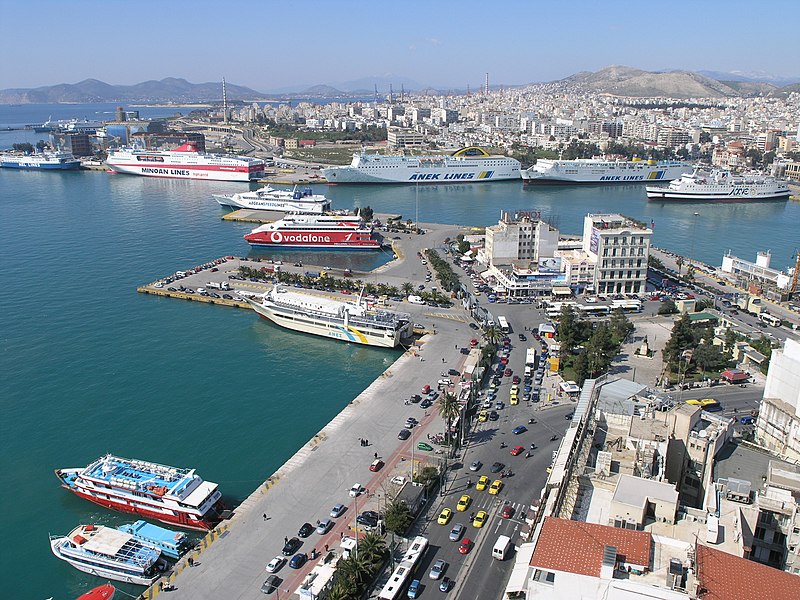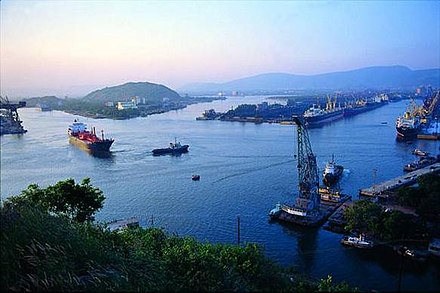Port Facts for Kids
A port is a maritime facility where ships can load and unload cargo and passengers.
View Article For:

Related Articles
Introduction
It’s kind of like a giant parking lot for boats. Ports help connect different countries and cities, letting them trade goods like toys, food, and clothes. There are many busy activities at a port, like loading and unloading cargo. People work hard to make sure everything is safe and goes smoothly. Ports are a vital part of the world's shipping system. 🌍
They can be found all over the globe and are vital for transportation!
Types Of Ports
A cargo port mainly focuses on moving products and materials. Cruise ports are designed for passenger ships, letting travelers visit exciting places! 🛳
️ Fishing ports help fishers land their catches to sell. Some ports are specialized for oil or containers, while others serve multiple purposes. For example, Los Angeles is a big cargo and cruise port! 🎡
Each type plays a vital role in keeping our world connected.
History Of Ports
Today, ports are essential for global trade!
Environmental Impact
On one hand, they help businesses grow and provide jobs. On the other hand, ships can pollute the air and water, and construction can hurt local wildlife. That's why many ports are working hard to be eco-friendlier! 🌍
They use clean energy, recycle waste, and even create green spaces. For example, some ports have started using solar panels to power their facilities! It’s essential to protect nature while keeping the economy strong.
Notable Global Ports
The Port of Singapore is one of the busiest in the globe, processing thousands of ships yearly! 📊
The Port of Rotterdam in the Netherlands is known as the largest port in Europe. 🏆
In the USA, the Port of Los Angeles is a major hub for trade with Asia. Each of these ports contributes to global shipping, helping goods move from one country to another. 🌍
You could even take a trip to visit these spectacular places one day!
Economic Significance
They help countries trade and do business with each other. In fact, about 90% of the world’s goods are transported by ships that go in and out of ports! 🤯
Many people rely on ports for jobs, from truck drivers to crane operators. When ports are busy, it helps cities grow and thrive. The Port of Shanghai, for example, is one of the largest in the world, boosting China’s economy significantly! Ports play a big part in keeping the world moving.
Shipping And Logistics
Companies plan routes to ensure products arrive on time. 🚀
Transporting goods includes trucks, trains, and ships. When items arrive at a port, logistics teams quickly organize how to distribute them! For example, if toys are shipped from China to New York, they arrive at the port, get checked, and then sent out to stores! 🎁
Understanding shipping helps us know where our favorite things come from!
Design And Infrastructure
️ They feature docks, which are the areas where the ships tie up. There are warehouses to store goods and cranes to lift heavy items off ships. They may also have roads and railways nearby to move cargo to different places. 🌟
Some ports even have fancy waiting areas for passengers! These facilities are carefully planned to handle large volumes of traffic and provide safety, so people and products can move smoothly.
Operations And Management
Many people work together to keep everything organized. Port authorities make sure the port is safe and efficient. Workers load and unload goods using big machines and cranes. They also have to follow rules to keep the environment healthy. 📊
They communicate with ships to know when they can come in or leave. Lots of teamwork ensures everything works smoothly, just like a well-oiled machine! 🚀
Safety And Security Measures
Ports use many safety measures to protect workers and cargo. They have fences, security cameras, and guards to keep watch. 🚧
Ships must follow strict rules to avoid accidents. Regular training helps workers understand how to respond to emergencies. ⚠
️ Ports also work with the Coast Guard and other organizations to ensure everything stays secure. Through teamwork and technology, ports aim to be safe places for everyone who works and visits! 🌟
Technological Advancements In Port Operations
️ Many ports now use machines that can load and unload ships automatically. Drones are being used to inspect cargo and check safety! 🚁
Even computers help track the movement of goods. Smart sensors help keep track of equipment and alert workers to any problems. 🚀
With these advancements, ports are becoming more efficient and environmentally friendly! The future of ports is exciting, and who knows what new inventions we will see!
DIY is a humongous library of
activities and courses for kids.
Curious?
Gallery of
Did you know?
🚢 A port is like a giant parking lot for ships where they load and unload goods.
🌍 Ports help connect different countries and cities for trade, making them very important.
🛳️ Cruise ports are designed specifically for passenger ships to bring travelers to cool destinations.
🌊 There are different types of ports for cargo, fishing, oil, and even passengers.
🏗️ Ports have special designs with docks, warehouses, and cranes to make operations efficient.
🎶 Running a port involves teamwork, much like conducting a symphony with many players.
🌱 Ports can have both positive and negative effects on the environment, leading to eco-friendly efforts.
💰 Ports handle about 90% of the world’s goods transported by ships.
🌟 The Port of Singapore is one of the busiest ports in the world.
🚀 Technology, including drones and smart sensors, is making ports faster and safer.






